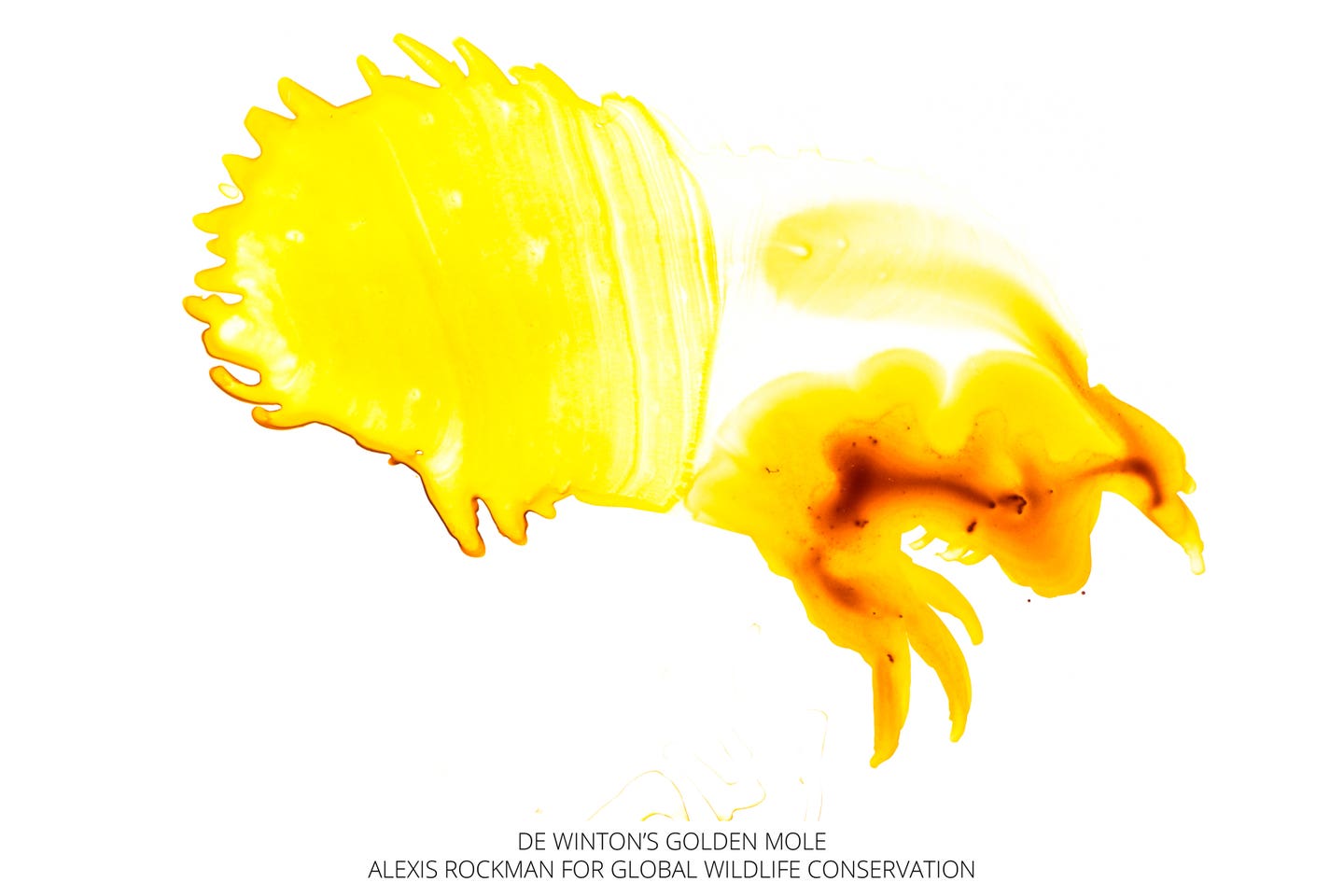In late June, a team from the South African NGO Endangered Wildlife Trust will embark on their latest expedition, with the support of Re:wild, in search of De Winton’s Golden Mole (Cryptochloris wintoni), a species not documented in 50 years. The De Winton’s Golden Mole is on Re:wild’s 25 Most Wanted Lost Species. (Learn more about the team’s research methods and previous expeditions.)
As we await their latest findings, check out these facts about De Winton’s and the world’s 20 other species of golden moles.
Golden moles aren’t all “golden.” So named for the iridescent sheen of their fur due to oil secreted from their skin, golden moles can also appear bronze, green or even purple.
They’re also not “true” moles. Genetically distinct from the moles in North America, Europe and Asia, golden moles are most closely related to other African mammals in the group Afrotheria, which includes a surprising assortment of ancient species: sea cows, elephants, hyraxes, aardvarks, elephant shrews and tenrecs. Tenrecs are their closest relatives, as these two families/taxa likely diverged about 50 million years ago.
The De Winton Golden Mole has only been documented at one location: near the coastal town of Port Nolloth, in South Africa’s Northern Cape Province. The other 20 species of golden mole are native to various places in sub-Saharan Africa.
Enlarged middle ear bones help golden moles detect underground vibrations and hear airborne sounds through the sand. This heightened sensitivity is useful given that golden moles are blind.
Golden moles move by “swimming” through the sand using their wide claws as paddles. Because the sand collapses behind them, they don’t leave tunnels the way true moles do, and therefore they can be harder for scientists to find.
One of the smallest species, the Grant’s Desert Golden Mole (Eremitalpa granti), can travel nearly 6 kilometers in 24 hours. Golden moles emerge from the sand at night in search of food.
Golden moles are “k-strategist” species. This means that historically their populations have neared the carrying capacity of their habitat; as a result they invest more energy into producing fewer offspring, and also live longer — all unusual traits for such a small species.
Most golden mole species do not need to drink. Well-adapted to their dry habitat, the species have efficient kidneys and very low metabolisms. During extreme temperatures or while resting, they can also go into torpor, a state where animals lower their body temperature and reduce their metabolisms to reduce their need for energy.
Mining is thought to be among the biggest threats to golden mole populations. The process of shifting sand to search for alluvial diamonds or quartzite destroys golden mole habitat.
De Winton’s Golden Mole is classified as Critically Endangered by the IUCN Red List of Threatened Species. It is currently the only golden mole species with that classification, and is among Re:wild’s 25 most wanted lost species.

Molly Bergen
Writer
Since beginning her career as a zookeeper, Molly Bergen has spent more than 16 years telling stories for a range of environmental NGOs. Covering everything from turtle nest guardians in Cambodia to community forests in the Congo, she is particularly passionate about conservation projects that create a “win-win” for both species and local people.



